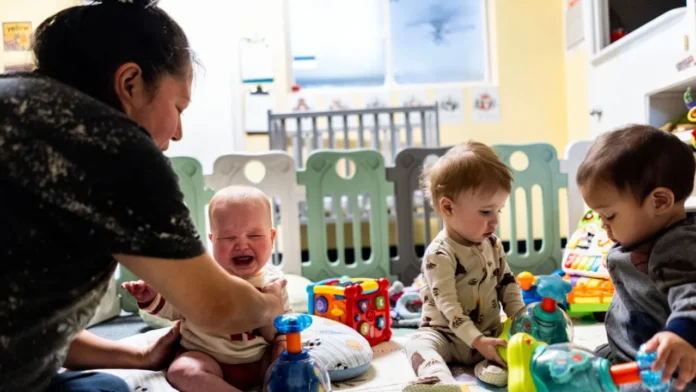Poll Finds Most Adults Struggle with Child Care Costs
A new survey by the Associated Press-NORC Center for Public Affairs Research shows that 75 percent of American adults see child care costs as a serious problem, and they urge action to help families pay for care. Adults from all walks of life report that rising fees for day care and early education stretch household budgets to the limit. Moreover, two thirds of respondents back free or low cost care for children under five and paid leave for new parents. However, just half of those surveyed say lawmakers should make support for working families a top priority in the coming session.
The poll, conducted in June, captures a moment when families face multiple financial pressures. Nationally, the average price of full time child care for a young child reached $11,582 in 2023, which amounts to roughly 10 percent of a two parent median income or 32 percent of what a single parent earns. Over the past two decades, costs climbed by 86 percent, far outpacing both wages and inflation.
Party Lines and Gender Gaps in Views on Child Care Costs
Democrats and women show stronger concern about the high cost of child care, with eight in ten Democrats and women labeling it a serious problem compared to seven in ten Republicans and men. Yet both parties agree that the price families pay for care has grown out of reach. Support for government funded solutions spans the aisle, even if intensity varies. Furthermore, views differ on how families should balance work and home life. About half of adults say a child does best when one parent stays home, while only one in ten see benefit when both parents work outside the home.
Economic Data Highlight the Pressure on Families

Families feel the squeeze as day care providers struggle to cover their own costs. Recent data from the U.S. Bureau of Labor Statistics indicates that the price index for child care has outpaced most other everyday services since 1995. Moreover, a report by the Center for American Progress finds that families in 40 states now pay more for early education than they spend on rent in the brightest markets. Experts warn that without action, many parents will face hard choices that could affect their ability to work and save.
The Balance Between Policy and Personal Responsibility
Despite strong support for public programs, only half of adults want federal leaders to put child care costs at the top of their agenda. Some families express fear of overreliance on government aid. Mary Banek, a nurse anesthetist in Texas who cares for her young grandson, says she does not trust large scale funding but favors cost caps instead. Her view reflects a common stance in rural and suburban areas, where residents seek careful limits on public spending.
Personal Analysis
I find the gap between public concern and policy priority troubling because it hints at a lack of sustained political will to address a problem that touches nearly every family with young children. The data show that cost growth outstrips wages, and that trend threatens to push more parents—especially single mothers—into difficult financial choices. Moreover, the mixed views on government role suggest that any solution must balance efficiency and accountability. Policymakers could consider partnerships with community groups and local providers to share costs and ensure quality care without overwhelming taxpayers.
While the poll gives a clear snapshot of public opinion, the real test lies in translating concern into durable action. Unless lawmakers and stakeholders work together to stabilize fees, expand options and fine tune support, families will continue to struggle under the weight of today’s child care costs. And that outcome carries long term risks for workforce participation and child development.
Sources: associatedpress.com

